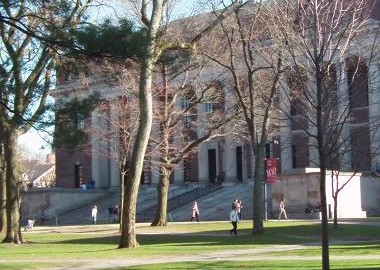What to Do If You’re Waitlisted by a Top-Tier College
Students aspiring to the most elite colleges usually submit several applications. This practice spreads the risk of possible rejection by one or more of the targeted schools. In fact, IvySelect recommends that 12 to 13 applications be submitted to a carefully prepared list of target schools.
There are three possible outcomes for each application: rejection, acceptance, or an invitation to join the college’s waitlist. The first outcome may be painful but, in terms of follow-up action, it’s simple… do nothing. The second outcome is the thick envelope of acceptance, bringing cheer and jubilation. However, the follow-up isn’t simple unless this is your one-and-only dream college. Otherwise, you need to decide to accept this offer or another one. All things considered, this is a nice problem to have.
The third outcome is the one that can really give you high anxiety… you’ve been waitlisted. If this is only one among several equally attractive schools and you’ve been accepted elsewhere, it’s no big deal. But if this is your dream school… what then? Do you follow your heart and work the waitlist routine? Maybe, but getting admitted from the waitlist to an exclusive college is a long shot… a very long shot.
Let’s consider why elite schools use waitlists when they have so many applicants from which to choose. Think of the application process as three stages. First is the Early Action/Early Decision (EA/ED) stage. Schools learn the quality of their EA/ED pool in November. At this time, however, they don’t yet know how strong the upcoming pool of Regular Decision (RD) applicants will be. They also don’t know how many of the students that they’ve admitted in the EA/ED stage will actually accept the offer of admission and become freshmen next fall, a factor known as yield. The unpredictability of yield is repeated in the RD stage, but on an even larger scale. Waitlisting helps admissions offices manage some of the variables that affect yield. It improves the likelihood that they’ll select the strongest possible freshman class.
According to a New York Times article on April 21, “The competition [for admission] is also hard on colleges trying to predict who will ultimately attend. So as insurance, waiting lists have grown. For example, Yale put 1,095 students on its waiting list, more than half the number it admitted.”
About half of applicants invited to join a waitlist decline to do so. But of those who accept, admissions offices can learn how committed a candidate is to attending the school. Key information is transmitted in the way that a candidate responds to waitlist status. This is when the things that an applicant has done to demonstrate interest in the school can pay off. Many who choose to be waitlisted feel that the school is still their primary choice and they will persevere if there’s even a chance that they’ll ultimately gain admission. But those who choose this route must be careful not to lose out on a standing offer of admission from a school that really wants them.
Last year, 550 colleges used a waitlist, including many of the most selective institutions, and about 150,000 students accepted a spot on one. Over a recent 4-year period, colleges admitted about 33% of waitlisted students, according to the National Association of College Admissions Counselors. They noted, however, that among those schools with admissions rates of less than 50%, the waitlist admissions rate was only 17%.
To show the odds against admission from an elite college’s waitlist, the chart below contains waitlist (WL) data from 6 elite colleges chosen at random from the College Board 2015 database. It combines data from both the EA/ED and RD stages of the admissions cycle.
| Institution | Applicants Invited to WL | Number Who Accepted WL | Admitted from the WL | % Admitted from WL |
| Berkeley | 3760 | 2445 | 1340 | 54 |
| Cornell | 3583 | 2231 | 81 | 4 |
| Georgetown | 2184 | 1249 | 149 | 12 |
| MIT | 652 | 575 | 52 | 9 |
| Northwestern | 2614 | 1452 | 43 | 3 |
| Princeton | 1207 | 818 | 39 | 5 |
The admissions rate at Berkeley stands out as extraordinarily high, but the others appear to be shaky bets. The Money College Planner put together a list of schools, along with their waitlist percentage admitted, that are consistently among the lowest in waitlist admissions.
- Michigan 2%
- Baylor 3%
- UC Davis 1%
- Vanderbilt 5%
- University of Virginia 1%
- UMass-Amherst 2%
- Rensselaer 3%
- Carnegie-Mallon 5%
- UC San Diego 2%
If you decide to stay on the waiting list, be proactive. Here’s what you can do to boost your chances of being accepted.
- Get a sense of your chances of admission.Contact the admission office to find out if the college ranks waitlisted students. Most schools are willing to let you know your status. The higher you rank on the list the better your chances of being accepted.
- Write a 1-page letter to the admission office. Take this opportunity to update admissions on recent academic and nonacademic factors, including awards won and honors that were not on your application. Emphasize your strong desire to attend the college and make the case for why you’re a good fit. Tell them that you’ll enroll if they admit you.
- Don’t slack off academically. If you’re waitlisted, you may be reassessed based on your 3rd and 4th quarter grades.
- Send a new letter of recommendation from a 12th grade teacher or outside source that provides new information about you.
- Stay in touch with the regional admissions officer who read your file, but don’t overdo it! The admissions office wants to see that you’re genuinely interested in their school, but they don’t want to be bombarded by emails and calls. Occasional contact is the rule.
The most important thing to do is to reconsider the other colleges that have accepted you. If you would be happy at one of them, send in your deposit and plan to attend that college in the fall. If you are admitted from a waitlist, you can reconsider your options at that point.





